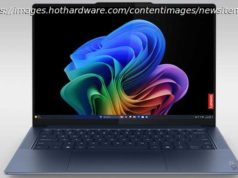LG V40 ThinQ was LG’s best foot forward in 2018, but does it makes sense buying it now when new 2019 flagships are right around the corner? Read our review to find out.
When MWC 2019 begins in less than two weeks, we’ll get a taste of some of the new flagships smartphones that will arrive in 2019, all vying for a spot in your pocket. These new models will feature the latest processors, slick new designs, and better imaging capabilities. This begs the question — does it makes sense paying full-price for a 2018 Android flagship right now?
The phone in question is the LG V40 ThinQ, which launched globally around October last year but only entered the Indian market last month. Priced at roughly Rs. 50,000, the V40 ThinQ is LG’s current flagship. It can be seen as a beefed up G7+ ThinQ (Review), thanks to the extra cameras at the back and front, a higher capacity battery, and a bigger display. All of this comes at a premium of Rs. 10,000 over the G7+ ThinQ.
So should you spend this kind of money right now when we have a new crop of Android flagships right around the corner? Let’s find out.
We have to hand it to LG for nailing the overall build quality and finish of the V40 ThinQ. This phone looks and feels a lot more premium than the G7+ ThinQ in our opinion, which is a good start. We also love the matte finish of the metal frame, and the glass back which doesn’t attract fingerprints easily. The phone looks more or less pristine even at the end of a workday.
The front and back glass taper slightly towards the sides, blending seamlessly with the frame so you don’t ever feel the edges. The exposed antenna lines on the top and bottom are a different shade of grey so they don’t blend with the rest of the metal frame, but at least they’re placed symmetrically.
As slick as the V40 ThinQ looks, it’s also equally slippery. The smooth finish barely offers any grip, which makes one-handed use a little scary at times. We had the phone slip from our hands multiple times during our test period, but luckily it only fell short distances onto tables or couches. Our unit did not get damaged,but we were lucky.
The large display on the LG V40 ThinQ does makes it a little hard to reach the physical buttons on both sides of the phone with one hand. Button feedback is good and we even have an extra Google Assistant button on the left, which can be used to wake the Assistant when the display is on or off. The button isn’t customisable. The hybrid dual-SIM tray sits on the right of the phone, and can accommodate either two 4G Nano-SIM cards for dual 4G VoLTE or a single SIM and a microSD card.
The LG V40 ThinQ is one of the few flagships that still offer a 3.5mm headphone socket, which is placed at the bottom. Beside it, we have a USB Type-C port and a speaker. The latter uses a part of the body as a resonance chamber to amplify sound, which LG calls Boombox speaker. Since it uses the body to amplify sound, you get a slight stereo effect but the earpiece doesn’t really contribute much and blocking it, makes no discernible difference to the audio.
The 6.4-inch QHD+ display dominates the front of this phone, but doesn’t feel too immersive due to the relatively thick black bezels on the sides. There isn’t much of a chin at the bottom, which is good, but you get a notch on the top. LG has managed to squeeze two cameras and a earpiece into the notch without making it too wide or deep. The earpiece sits a little off-centre but we didn’t find that to be an issues with calls.
LG has used an OLED panel (P-OLED according to the AIDA64 app), which produces vivid colours and good black levels. You can choose different colour profiles depending on how punchy you want the colours to look. We found the ‘Web’ colour profile to strike a good balance, but most of the other profiles made reds look too jarring.
In the box, the LG V40 ThinQ ships with a 16W fast charger, Type-C cable, SIM eject tool, and a 3.5mm headset.
Being a 2018 flagship, the LG V40 ThinQ is powered by Qualcomm’s Snapdragon 845 octa-core SoC. In India, there’s only one version which has 6GB of LPDDR4X RAM and 128GB of storage. The latter is expandable to a theoretical 2TB using a microSD card, but that will be at the cost of the second Nano-SIM slot.
The phone is also IP68 certified for dust and water resistance, has Gorilla Glass 5 for the front, back and cameras, and has the MIL-STD-810G military certification for shock resistance. Other connectivity features include dual-band Wi-Fi 802.11ac, Bluetooth 5, NFC, USB-OTG, GPS, and the usual suite of sensors.
The LG V40 ThinQ is still stuck with Android 8.1 Oreo and our unit was running the December 2018 security patch, which is a little shameful considering the phone launched only around four months ago internationally. Perhaps LG’s custom skin is what’s causing the delay. In any case, an Android 9 Pie update is only expected in Q2 this year, around the time Google will be announcing Android Q.
There’s a lot going on in LG’s custom skin, and most of the tricks and gestures are similar to what we’ve already seen with the G7+ ThinQ.






